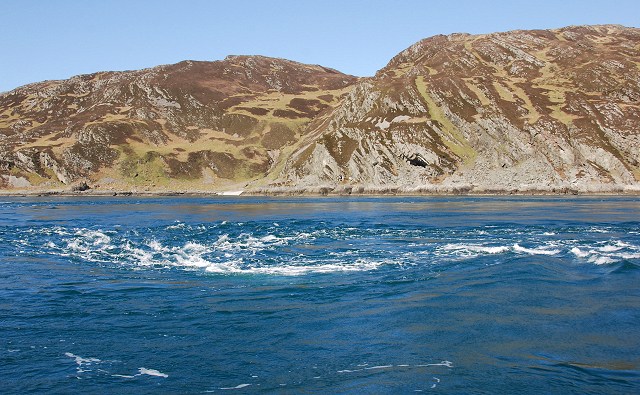

Sometimes regarded as an oceanic black hole, maelstrom vortexes have been feared by seafarers for centuries. Because water spins counterclockwise north of the equator and clockwise south, the interaction between currents can create a powerful circular vortex known in the maritime world as a maelstrom.

When weather and geological conditions are just right, currents can collide with one another at sea to create conflicting tidal flows. This is actually a common occurrence in any body of water, be it a river or lake, but when it occurs in the ocean, things can get very dangerous very quickly. A maelstrom is a whirlpool created when moving water twists and turns. If you have ever paid attention to the water running down you bathroom sink, you have already witnessed a maelstrom – so to speak.
#CORRYVRECKAN MAELSTROM FULL#
Learning about maelstroms can help you avoid getting stuck on a cruise ship and experiencing some of the worst cases of nausea ever thought of, so, now that cruise season is in full swing, our cruise injury lawyers want to help you understand exactly what a maelstrom is and how it can cause you to have the worst cruise vacation of your life. But while the term sounds scary enough, this is one instance in which the bite is much worse than a bark. In a recent email, she told me that she believes the story of Scylla and Charybdis endures in the public imagination because, “It’s a way of representing, instantly, the impossible dilemma.” Navigating between those two monsters is impossible without supernatural aid, so Odysseus is forced to choose which one to confront.If you know a thing or two about cruising – or Viking history – you may have already heard of maelstroms, dreaded natural maritime occurrences which have time and time again proven to be responsible for many a sea sick passenger. It has made it wonderfully clear how little of Homer I’ve actually understood. Her translation of The Odyssey made me see this story I’ve read a dozen times-and the art of translation itself-in an entirely new and brighter light.

Wilson is Professor of Classical Studies at the University of Pennsylvania. “The day I finally reached the cave and found the red figures,” the latter told me, “moving there in the scant light, deep inside the mountain, I wept for feelings I still cannot name.” Pregnant with death? I suspect both Orwell and Macfarlane would agree. Three rows of crowded teeth, pregnant with death. With a gruesome head on each, and in each face She has twelve dangling legs and six long necks “In the case of Kollhellaren, certainly, it is hard to imagine that the cave’s proximity to the Moskstraumen Maelstrom was not considered part of its power as a place of making.” “This place, now, is one of the thinnest I have ever been,” he writes. Macfarlane, a braver man than I, traveled on foot. It was there that “practices in the painted caves may have been rites of passage, permitting mortal movement-through the membrane of the stone-to the cosmic underland or overland.” The cave is accessible by boat, but that would mean passing through one of our planet’s fiercest whirlpool systems, the Moskstraumen. “The cave’s modern name is Kollhellaren,” he writes, “which translates roughly as ‘Hole of Hell.’” Two entrances to the underworld, then, hard by one another one opening into rock, the other into the ocean. That section is called “Red Dancers (Lofotens, Norway)” and in it Macfarlane describes a near-death experience of his own while attempting to visit the site of some Bronze Age painted figures in a remote sea cave. “Undoubtedly the cave of the Red Dancers in Arctic Norway,” he told me, “to which I made what became a shockingly arduous solo winter journey.” I asked Robert Macfarlane via email what had been his most potent experience in such places while writing his magnificent Underland: A Deep Time Journey. I recently returned to Orwell’s Diaries because I’ve been interested in the idea of thin places, where the membrane separating the real and extra real can feel tenuous, where one’s religious or spiritual communions with nature are most likely to occur.


 0 kommentar(er)
0 kommentar(er)
